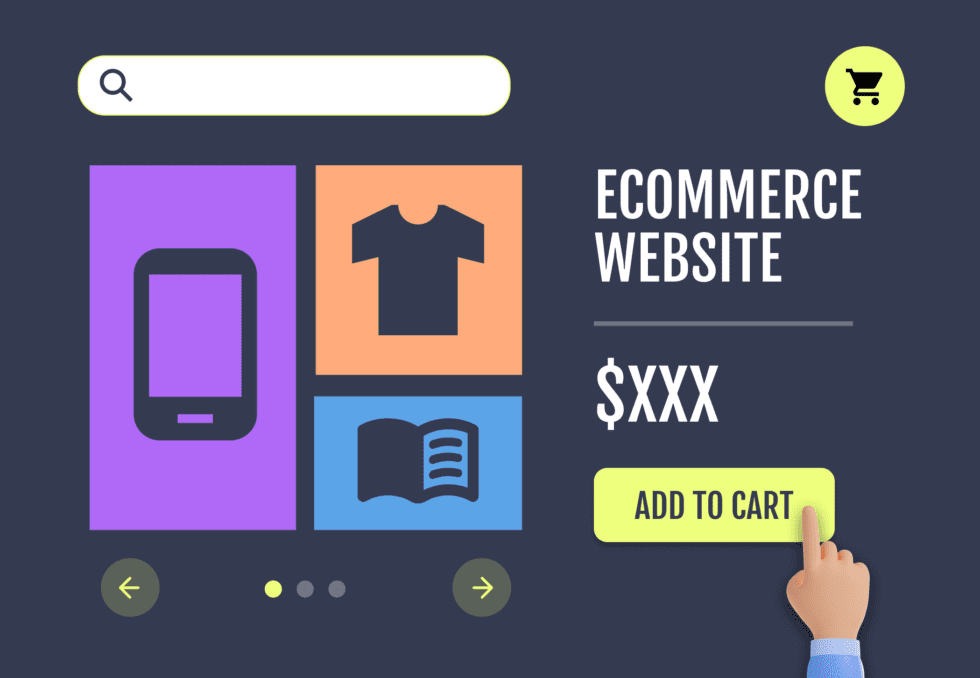
Artificial Intelligence has taken over the world and entered every business. UI/UX design is no stranger to the effects of AI. Efforts are on to understand the implications of AI on UI/UX design and the changes it might bring for designers. Simultaneously, the shift also has to consider the ethical usage of AI while taking its assistance.
The world of design is on the precipice of a significant shift fueled by the ever-evolving power of AI. While it holds immense potential to enhance user interfaces and experiences, its integration into UI/UX design raises critical ethical questions regarding the disruption it is bringing.
Ethical questions: Navigating the minefield
The most pressing concern lies in the potential for bias and discrimination. Like any other machine learning system, AI algorithms are only as good as the data they are trained on. Biases in data can lead to discriminatory design choices, perpetuating existing inequalities and producing little innovation.
Imagine an AI-powered personalization engine recommending products based on biased user profiles, potentially excluding specific demographics. This raises crucial questions about fairness and inclusivity in design.
Recently, Google disabled the image-generation feature on its GenAI tool Gemini (formerly known as Bard) because it generated stereotypical images to prompts. When users posted about the lack of diversity and inaccurate historical depictions on X, Google took cognizance and paused the image generation capabilities until more improvements emerged.
Away from potential exploitation
Privacy is another primary concern. AI heavily relies on user data to function, raising data collection, usage, and security issues. Imagine an AI-powered chatbot collecting sensitive user information without proper consent, jeopardizing their privacy. Designers have the ethical responsibility to ensure transparent data practices and prioritize user privacy.
Manipulation and exploitation are as true to AI as to any human institution. AI can be used to create highly persuasive interfaces, potentially influencing user behavior in harmful ways. For instance, an AI-powered recommendation algorithm might exploit users’ psychological vulnerabilities to promote unhealthy products or services.
Designers must resist manipulative tactics and prioritize ethical user engagement. Doing so includes taking the time to research and try to understand user personas. The problem-solving aspect has to come from the designers because relying on AI to solve complex problems might yield complex results.
AI taking the reins
There are myriad ways in which AI has been helping designers provide the best services and products. While not all are about eliminating repetitive, mundane tasks, the focus is improving people’s experience and making their lives easier. Here are the top 3 ways in which AI has influenced designers and users alike:
- Personalization at scale: Imagine an e-commerce website where AI tailors the product layout and recommendations to each user based on their past interactions and preferences. Tools like Adobe Sensei already use AI to suggest relevant fonts and styles, paving the way for personalized UI experiences.
- Voice-driven Interfaces: AI-powered voice assistants like Siri and Alexa are changing our interaction patterns with technology. Designers can focus on crafting natural and intuitive voice interactions, leveraging AI for automatic speech recognition and sentiment analysis to create seamless user experiences.
- Accessibility automation: Testing website accessibility for diverse users with disabilities can be time-consuming. AI tools are being developed to automate accessibility checks, freeing designers to focus on creative solutions to meet specific user needs.
What does GenAI bring to designers?
The rise of generative AI, capable of creating design elements based on user input, presents both opportunities and challenges for UI/UX professionals. While it can automate repetitive tasks, it raises concerns about job displacement and skills needed in the new landscape. The focus should, then, be on becoming creative directors and expanding beyond the designer’s role to showcase the creative side of designing and strategizing.
Designers should remember that the goal is to work around AI, not run away from it or depend entirely on it. AI will not give us the correct answers with a prompt but simplify complex stuff very straightforwardly and approachable. Designers must resist the urge to repurpose a machine’s content because they can understand what users want, something AI can’t.
AI reshaping UI/UX jobs
AI is creating disruptions at a supersonic speed. A lot of these disruptions seemed far out in the future. However, things have changed fast since the COVID-19 pandemic. The goal is not just to get the work done but to create better and more adaptable designs in half the time. Here’s a glimpse of what these advancements could potentially lead to:
- Reduced demand for entry-level UI/UX roles: Organizations use AI to do away with everyday, mundane tasks traditionally associated with entry-level jobs. With AI handling repetitive tasks, the demand for basic design skills might decrease.
- Increased need for specialized skills: Designers must develop expertise in working with AI tools, understanding their limitations, and focusing on strategic design decisions. The trick is to use AI to give you direction and use your specialized skills to get results.
- Shift towards user research and experience design: As AI automates basic design tasks, designers will likely focus more on user research, understanding user needs, and crafting holistic user experiences. Designers are more aware of user experience and trends, which they can use to create user-centric experiences.
While some entry-level jobs involving repetitive tasks might get displaced over time, the overall impact on the UI/UX field is likely more nuanced than outright job elimination. Instead, AI will probably transform job descriptions, requiring designers to adapt and develop new skill sets to thrive in the evolving landscape. As long as AI is used as another tool for designers to improve their output, it should not be seen as a threat.
AI as a design ally
Despite the potential disruptions, AI offers tremendous potential to make designers’ lives easier and their work more effective. AI frees up designers to work on the creative aspects of their design by eliminating repetitious tasks like generating layout variations or optimizing colors. It can serve as an ally if it is used that way.
And there are real-world examples of AI-driven assistance benefiting designers:
- A/B testing automation: AI can automate A/B testing of different UI elements, freeing designers to analyze results and make informed design decisions.
- Accessibility audits: AI-powered tools can assist in identifying and fixing accessibility issues in designs, ensuring inclusivity for all users.
- Data-driven design: AI can analyze user behavior data to identify areas and opportunities for improvement, guiding designers toward data-backed decisions.
- Prototype generation: Imagine AI automatically generating multiple UI prototypes based on user needs and design principles. This could accelerate the design process, freeing designers’ time for strategic thinking and refinement.
- Personalized interfaces: AI could personalize UI elements and layouts based on user preferences, creating a more tailored and engaging experience. Imagine a learning platform that adapts its interface to a user’s learning style, making the process more effective.
- Accessibility automation: AI could automate tasks like alt-text generation and color contrast analysis, ensuring website accessibility for all users. This could significantly improve the accessibility landscape of the web.
Designers can create more efficient and effective design processes with AI as a powerful tool and collaborator, leading to better user experiences. This partnership will be vital in navigating the ethical considerations and ensuring AI’s positive impact on design.
We must remember that AI cannot do critical thinking for us; that will continue to happen by designers in the background as AI simplifies the processes.
Design in an AI-powered world
The future of UI/UX design is undoubtedly intertwined with AI. As we work through this exciting yet challenging AI-driven world, it’s crucial to prioritize responsible design practices. Here are some key takeaways:
- Prioritize ethics: Designers must be aware of potential biases, privacy concerns, and manipulation risks and actively implement ethical design principles.
- Embrace continuous learning: Stay updated on AI advancements and develop skills in working with AI tools to adapt and excel in the evolving design landscape.
- Focus on user-centered design: Don’t let AI influence the importance of understanding user needs and creating personalized user experiences, something only humans can do.
- Collaborate with AI: View AI as a powerful partner, leveraging its benefits as a collaborative tool rather than giving it mastery.
- Understanding and working with AI: Designers need to become familiar with AI capabilities and limitations, learning to leverage them effectively while ensuring ethical implementation.
- Human-centered design: With AI automating tasks, designers can focus on the core aspects of human-centered design – empathy, understanding user needs, and crafting meaningful experiences.
- Creative problem solving: AI might handle routine tasks, but designers will still be needed for unique challenges that require creativity, critical thinking, and strategic decision-making.
Collaboration, not competition
AI in UI/UX design is not a futuristic vision; it’s happening today. While disruptions are inevitable, the focus shouldn’t be on fear of replacement but on embracing AI as a valuable collaborator. While AI’s impact on UI/UX design presents ethical concerns and potential disruptions, it also offers a future filled with exciting possibilities.
The future of design lies not in replacing humans but in empowering them to work smarter, not harder, alongside this powerful technology. As we navigate this evolving landscape, remember that human-centered design principles and ethical considerations must remain the guiding stars, ensuring that AI complements, rather than replaces, the irreplaceable human touch in design.
Want AI-powered solutions for your business needs?
Get in touch.







